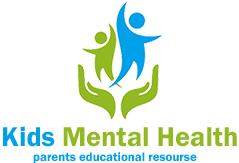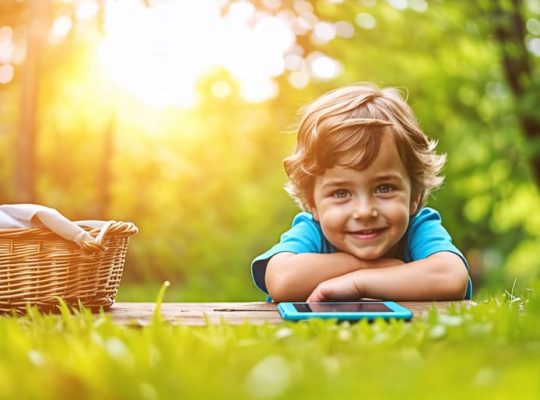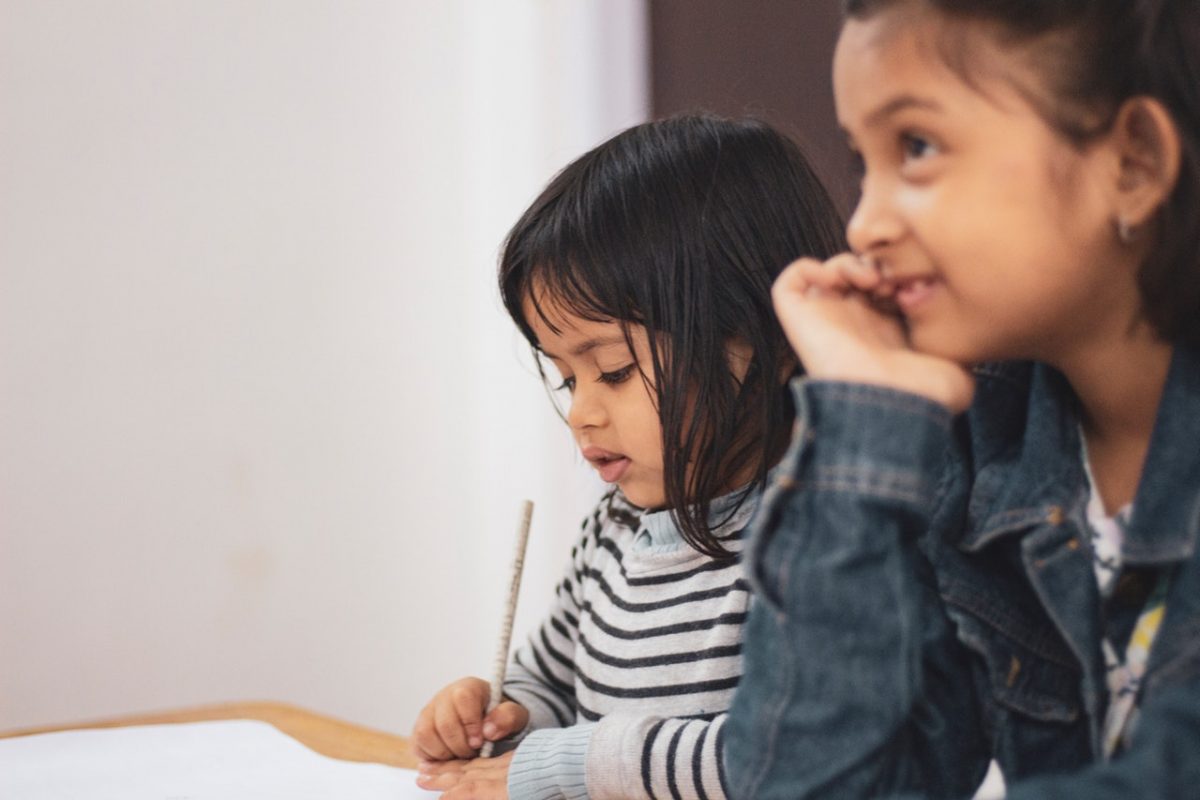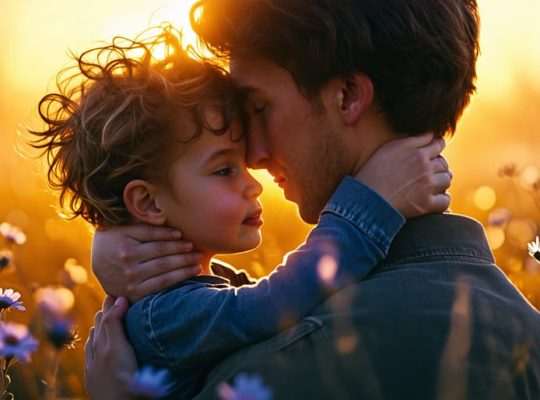Practice deep breathing to help children find calm amid chaos. For example, guide them through simple exercises like inhaling for four counts, holding for four, and exhaling for four. Encourage children to focus on their breath, promoting relaxation.
Use grounding techniques to reconnect them with the present moment, which can often be disrupted by PTSD. A simple way is by engaging their senses: ask them to identify five things they see, four they can touch, three they hear, two they smell, and one they taste. This exercise decreases anxiety by diverting their concentration away from distressing memories.
Introduce mindful movement to channel their energy positively. Engage in activities like yoga or tai chi, which combine physical movements with mental focus. These activities help in releasing pent-up stress and improving emotional regulation.
Encourage journaling to empower them to express their thoughts and emotions safely and constructively. Guide them to write about their feelings or even draw if they find words challenging. This process can foster self-reflection and healing.
When supporting these practices, ensure you are recognizing PTSD signs to tailor interventions accordingly.
Role of Mindfulness in Managing PTSD
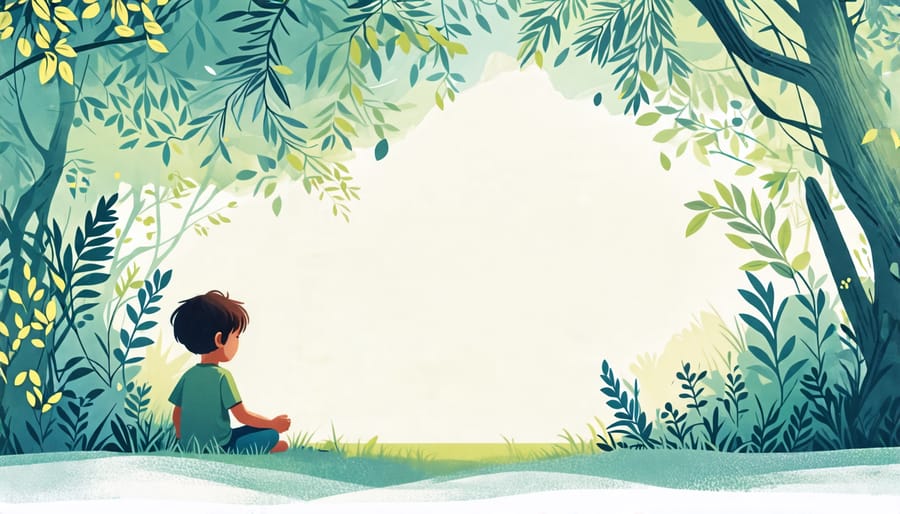
Benefits of Mindfulness
Mindfulness can be a powerful ally for children dealing with PTSD, offering both scientific and emotional benefits. At its core, mindfulness helps children become more aware of their present thoughts and feelings, allowing them to process these emotions in a safe and supportive way. This practice has been shown to reduce stress and anxiety by encouraging a greater sense of calm and emotional regulation. Scientifically, mindfulness can lower cortisol levels, the stress hormone, which can be particularly beneficial for children whose bodies are often in a heightened state of alert.
Emotionally, mindfulness enables children to connect with their feelings and understand them without judgment. This understanding can lead to improved self-esteem and resilience, as children learn ways to cope with traumatic memories that might feel overwhelming. Personal stories of children benefiting from mindfulness often highlight their increased ability to focus and a more positive outlook on life, making it an essential tool for parents, teachers, and healthcare professionals dedicated to nurturing child mental health.
How Mindfulness Helps PTSD Symptoms
Mindfulness is a powerful tool in managing PTSD symptoms, offering relief and support for children who may be struggling. Through mindfulness, children learn to focus on the present, which can significantly reduce anxiety and intrusive thoughts often experienced with PTSD. By paying attention to their breathing and bodily sensations, they can become more grounded, decreasing their levels of hyperarousal. This practice helps them recognize when they are reacting to past trauma rather than current reality, reducing episodes of panic and fear.
Moreover, mindfulness encourages emotional regulation by fostering a non-judgmental awareness of their feelings. This compassionate understanding empowers them to process difficult emotions like anger, sadness, or guilt without becoming overwhelmed. Mindfulness also contributes to improving sleep patterns by promoting relaxation, an essential aspect of recovery for many children affected by PTSD. By consistently practicing mindfulness, kids can develop coping strategies that alleviate distress, supporting their journey toward healing and emotional well-being.
Mindfulness Techniques for Children with PTSD
Breathing Exercises
Breathing exercises can be a gentle yet powerful tool to help children manage PTSD symptoms. One simple technique is the “balloon breath.” Invite your child to imagine a balloon in their favorite color. Encourage them to take a deep breath in through the nose, filling their belly like a balloon, then slowly release it through the mouth. This can make them feel calmer and more in control. Another method is “starfish breathing.” As they trace their fingers along a starfish shape, they breathe in going up a finger and out going down. These exercises are easy to practice anywhere, offering support and helping children feel centered and safe.
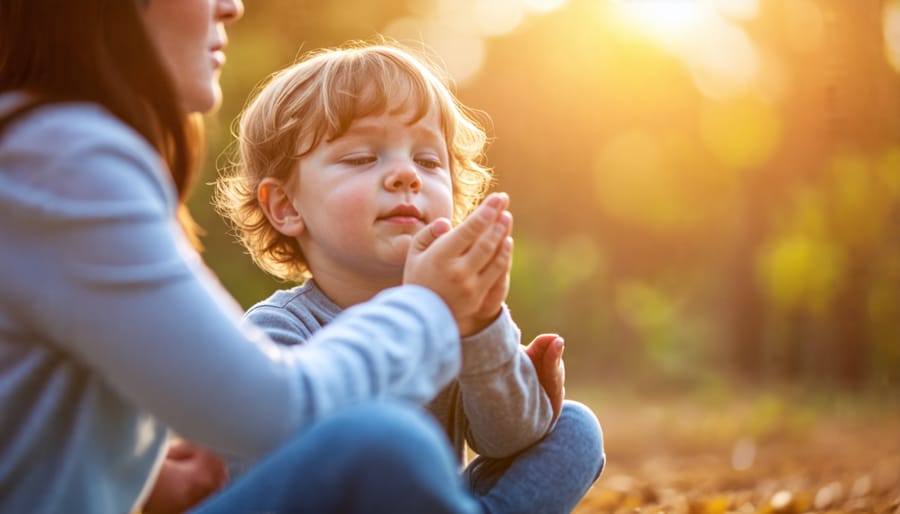
Guided Imagery
Guided imagery can be a powerful tool for helping children with PTSD find a place of calm and safety within themselves. This mindfulness technique involves using the imagination to create soothing visuals in the mind, much like telling a comforting, supportive story. Children might picture themselves in their favorite place, like a beach or a serene forest, allowing them to immerse in the sounds, smells, and feelings of that environment. By tapping into their creativity, children can use these visualizations to ease tension and stress. With guidance from a trusted adult, like a parent or teacher, they can explore these images to foster relaxation and a sense of control, supporting their healing journey.
Progressive Muscle Relaxation
Progressive Muscle Relaxation (PMR) can be an empowering tool for children with PTSD, helping them recognize and release tension in their bodies. This technique involves gently tensing and then relaxing different muscle groups, guiding kids to feel the difference between stress and relaxation. Imagine guiding a child’s awareness to their shoulders: “Squeeze them up to your ears, hold for a second, then slowly let go.” This simple practice can foster a deeper body awareness, offering a sense of control and calm. By incorporating PMR into a child’s routine, parents and caregivers can offer a comforting, supportive way to ease tension and promote healing.

Mindful Coloring
Mindful coloring offers a supportive pathway for children with PTSD to explore emotions creatively. By engaging the senses, it provides a gentle way to focus on the present moment. As a form of creative therapy, it involves choosing colors, concentrating on patterns, and letting imaginations run free. This engaging activity helps kids express themselves non-verbally, providing a sense of calm and control. Martin, a child therapist, shares that mindful coloring can reduce anxiety and encourage reflection, making it a valuable tool for children struggling to articulate complex emotions.
Expert Opinions and Personal Stories
Insights from Mental Health Experts
Mental health experts emphasize that mindfulness can be a powerful tool for children dealing with PTSD. According to Dr. Sarah Johnson, a leading child psychologist, mindfulness helps children focus on the present moment, which can reduce the grip of traumatic memories and lessen anxiety. She shares a story of a young patient who, after practicing deep breathing and guided imagery exercises, began to sleep more peacefully and navigate daily challenges with greater ease. Another expert, Dr. Alex Hernandez, highlights that mindfulness equips children with emotional tools to better manage their reactions. This improves their communication skills and strengthens their relationships with family and peers. Both experts agree that while mindfulness is not a standalone cure, incorporating these techniques can significantly support a child’s healing journey, providing them with a sense of safety and self-control. For parents, teachers, and healthcare professionals, practicing mindfulness alongside children can enhance its effectiveness and create a trusting, supportive environment.
Real-Life Success Stories
Sarah, a dedicated mother of two, recalls how mindfulness transformed her son’s life. Battling PTSD from a traumatic event, her 9-year-old son found solace in mindfulness exercises. Simple breathing practices and guided imagery helped him reconnect with a sense of safety and calm. “It was incredible to watch him find peace in moments that used to overwhelm him,” Sarah shares, emphasizing the power of these techniques in nurturing his well-being.
Similarly, Mark, a psychological counselor, notes the positive shifts in a young patient once struggling with PTSD. Through mindfulness, the child learned to focus on the present moment, reducing anxiety and stress. Mark highlights, “It’s been amazing to see him smile more and engage with friends again.”
These personal stories illustrate the profound impact mindfulness can have on children coping with PTSD. By integrating mindfulness into daily routines, parents and professionals can offer children a supportive path to healing and resilience.
Practical Tips for Parents and Caregivers
Creating a Mindful Environment
Creating a mindful environment at home or school can play a crucial role in helping children with PTSD. Start by designating a quiet and comfortable space where kids can feel safe and uninterrupted. Utilize soft lighting, calming colors, and minimal clutter to foster tranquility. Incorporate sensory elements like soft cushions or calming scents that are soothing. Encourage the presence of familiar items that promote relaxation, such as a favorite blanket or a beloved stuffed animal. It’s essential to create a routine, allowing the child to expect time for mindfulness daily. Additionally, incorporating community support into the environment through shared activities can enhance the experience. Let the child personalize the space with their preferences to build a sense of ownership and comfort.
Consistency and Support
Consistency in practicing mindfulness techniques is crucial for children dealing with PTSD. Regular engagement helps foster a sense of stability and predictability, which is essential for healing. Parents and caregivers play a vital role by providing a supportive environment and participating alongside the child. This can encourage the child to feel safe and understood, making mindfulness a more effective tool. Involving trusted adults not only reinforces the child’s commitment but also helps build a reassuring network around them. By consistently practicing together, families and support figures can create a nurturing space, thus offering the child hope and resilience on their journey to recovery.
Helping children navigate PTSD can be challenging, yet mindfulness offers a beacon of hope. By incorporating mindfulness practices, we provide children with tools to regain control over their emotions and find calm in overwhelming moments. This gentle approach not only nurtures healing but also empowers children to face daily challenges with resilience. Parents, teachers, and healthcare professionals can foster a supportive environment by integrating simple mindfulness exercises into daily routines. As these children learn to be present in the moment, their confidence and emotional well-being can flourish. With understanding and patience, we can guide them towards a brighter, more resilient future.
